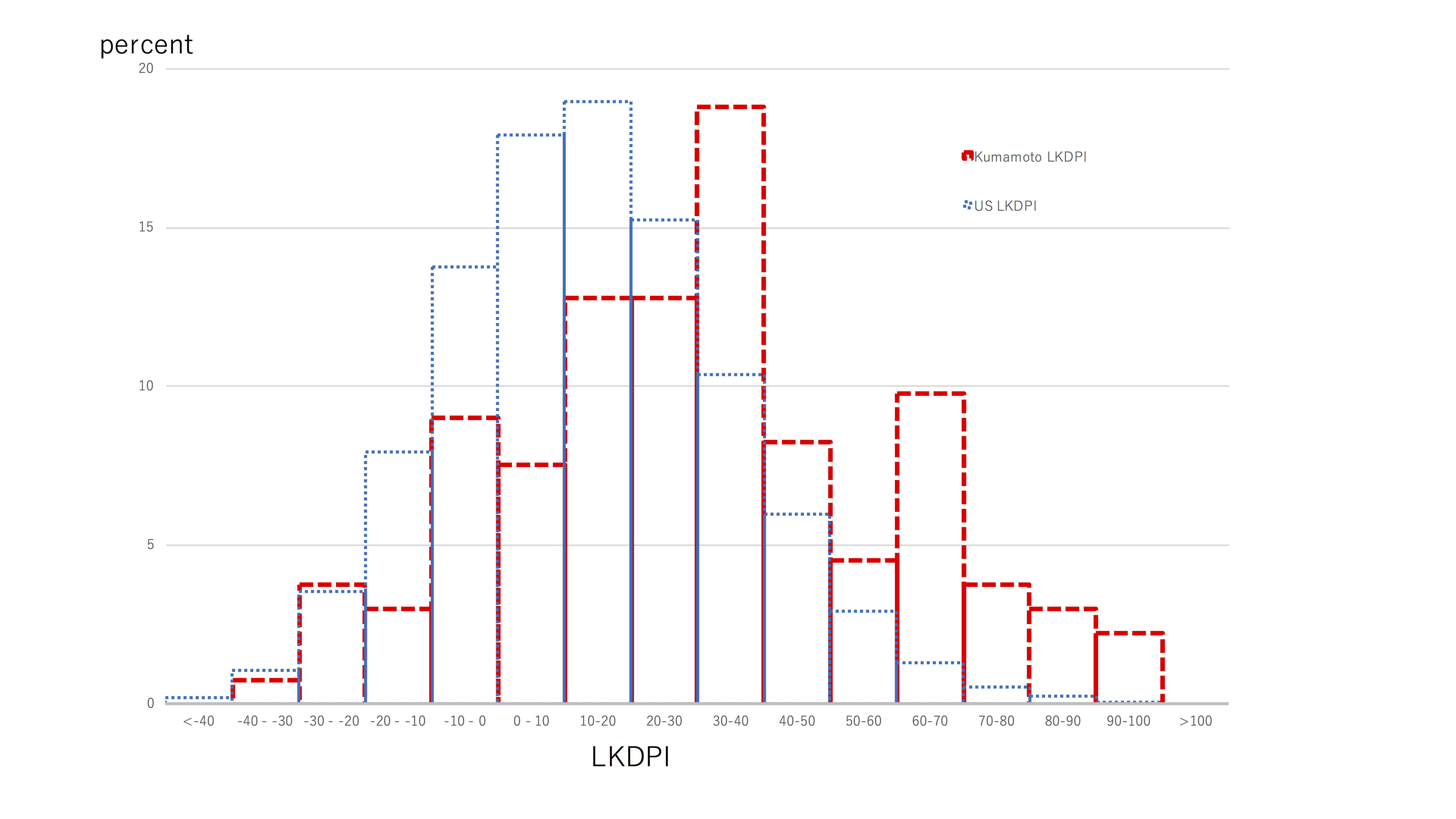Is Living Donor Kidney Donor Profile Index Useful for Japanese?
1Department of Surgery, University of Pittsburgh, Pittsburgh, PA, 2Department of Surgery, Japanese Red Cross Kumamoto Hospital, Kumamoto, Japan, 3Department of Nephrology, Japanese Red Cross Kumamoto Hospital, Kumamoto, Japan, 4Department of Urology, Japanese Red Cross Kumamoto Hospital, Kumamoto, Japan
Meeting: 2019 American Transplant Congress
Abstract number: B289
Keywords: Kidney transplantation, Outcome, Prediction models
Session Information
Session Name: Poster Session B: Kidney Living Donor: Selection
Session Type: Poster Session
Date: Sunday, June 2, 2019
Session Time: 6:00pm-7:00pm
 Presentation Time: 6:00pm-7:00pm
Presentation Time: 6:00pm-7:00pm
Location: Hall C & D
*Purpose: Kidney donor profile index is widely used to evaluate the deceased donor quality. Furthermore, living kidney donor profile index (LKDPI) was recently proposed by Massie et al. Japan is known to have high ABO incompatible rate due to the scarcity of deceased donors. The aim of this study was to validate the LKDPI among Japanese population.
*Methods: We performed retrospective analysis of 133 living donors in renal transplant in our institution. We analyzed clinical characteristics and outcomes of patients.
*Results: Median(IQR) donor age was 59 (51-65), median(IQR) BMI was 22.9 kg/m2 (20.9-25.2). All the donors were Japanese and 73% of donors were biologically related. Male was 35 % and 14% of transplant was male-to-male kidney transplantation. ABO incompatible rate was 28.5%. Median(IQR) donor eGFR (CKD-EPI equation) was 108.7 ml/min/1.73m2 (99.9-115.5). One-year graft survival was 98.5% and three-year graft survival rate was 97%. The incidence of antibody mediated rejection was 5.2%. Greater donor recipient weight ratio among donors with donor recipient weight ratio less than 0.9 was only associated with greater risk of graft loss after living donation. (P=0.039). Other factors included in LKDPI calculation were not associated with graft survival in our patients. Median(IQR) LKDPI score was 30.2 (11.8-46.8). This was significantly higher than the score in the US previously reported that was 12.8 (-0.8-27.2). Only 16.5% of donors had LKDPI<0 (less risk than any deceased donor kidney in US), and 23.3% of donors had LKDPI>50 (more risk than the median deceased donor kidney in US).
*Conclusions: Our outcomes had better survival even though higher ABO incompatible rates. According to original LKDPI, our donor pool is somewhat higher risk than general US population. In this study, LKDPI was not associated with three-year graft survival. However, lower LKDPI tended to be good outcomes. To compare internationally, an adjusted LKDPI formula for Japanese might be necessary based on the outcomes of national data.
To cite this abstract in AMA style:
Okumura K, Tanaka K, Hidaka Y, Toyoda M, Uekihara S, Inadome A, Yokomizo H, Yamanaga S. Is Living Donor Kidney Donor Profile Index Useful for Japanese? [abstract]. Am J Transplant. 2019; 19 (suppl 3). https://atcmeetingabstracts.com/abstract/is-living-donor-kidney-donor-profile-index-useful-for-japanese/. Accessed December 27, 2025.« Back to 2019 American Transplant Congress

